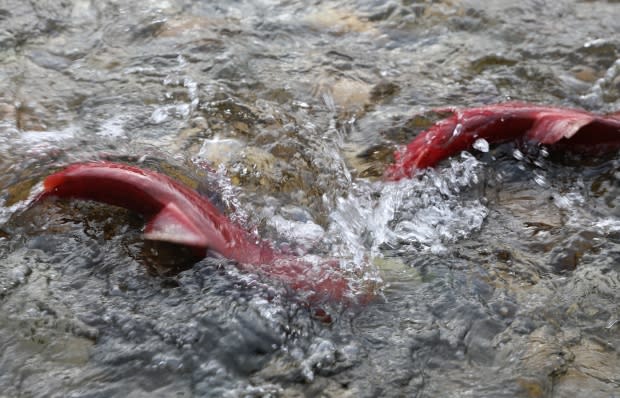Conservationist blames fishing practices for low salmon run numbers; DFO disagrees

The number of sockeye salmon that made it up the Fraser River last fall was lower than originally predicted, prompting a conservation group to blame the federal fisheries regulator for allowing the area to be overfished.
"This year, it was the lowest run or spawning return they've seen on record on this cycle," Greg Taylor told CBC Radio's Daybreak Kamloops host Shelley Joyce.
"They were very disappointing," said Taylor, a senior fisheries advisor for the Watershed Watch Salmon Society.
High estimates, low returns
The Fraser River Panel, a joint Canada-U.S. panel, determines the number of salmon fishermen can catch during salmon spawning season based on estimates provided by Fisheries and Oceans Canada (DFO).
Last year, DFO's estimate that six million salmon would return to the Fraser River overestimated the late-summer run by 30 per cent, said a press release from the Watershed Watch Salmon Society.
But because fishing decisions are based on these estimates, Taylor argued, fisheries officials allowed too many salmon to be harvested.
"They overfished relative to their own goals," he said.
The Adams River was one of the hardest hit areas, Taylor said. DFO data shows 535,564 salmon made it home to spawn, the lowest on record for this cycle.
Listen to the full interview with Greg Taylor here:
DFO disagrees
A DFO representative told Joyce on Thursday that, while the numbers were lower than predicted, the return numbers were not out of the ordinary.
"We were below our median forecast," Jennifer Nener, director of salmon at DFO, told Taylor on Thursday. "But overall we still had a reasonably good return."
Nener pointed to the "good news" that spawning success rates were very high — 99 per cent as opposed to the average of 89 per cent.
"The fish that did make it to the spawning grounds actually did really well," Nener said.
Nener acknowledged the challenge of predicting salmon numbers, especially those involved in the late run. They are hard to count because they tend to gather at the mouth of the Fraser River as opposed to swimming straight up the river.
Taylor said it makes more sense to count salmon after they arrive near their spawning grounds. That way fisheries managers can determine if there is a surplus before making decisions on allowable catches.
"There is huge uncertainty in estimating these runs," said Taylor. "We have to take a much more precautionary approach."
Listen to the full interview with Jennifer Nener here:

